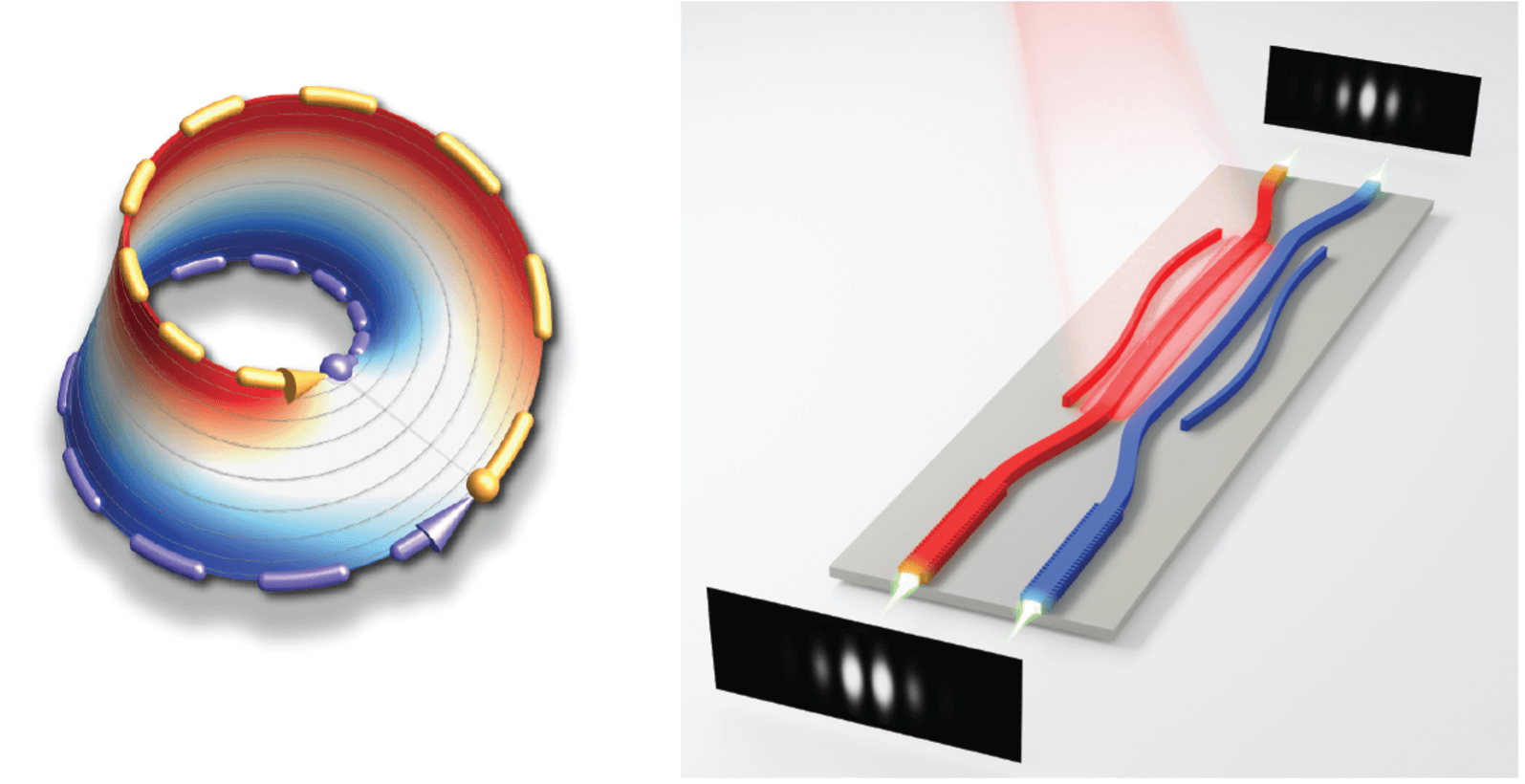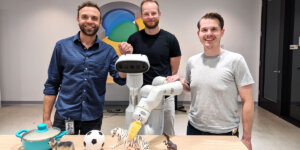
As a result of the non-trivial topological structure through which the laser light has to pass, exactly opposite interference patterns emerge at the two ends of the laser. (PHOTO CREDIT: USC Viterbi)
Topology is a mathematical discipline that deals with categorizing objects based on their fundamental shape and structure. Any two objects that share some fundamental similarities can be made into each other. A coffee cup, with a hole in the center of its handle, can be pulled, shifted, and morphed into a donut, which has a hole in its center. In the field of topology, these two very different things would actually sit in the same category of objects.
Topology has been important to the physics of solid-state objects for some time and has been instrumental in the discovery new types of quantum materials. But new research from USC Viterbi has shown how it can fundamentally affect the generation of laser light as well. This realization promises to have profound implications on a myriad of important areas of research and industry.
A group of researchers from the University of Southern California, Technical University of Vienna (TU Wien) and the University of Central Florida led by Mercedeh Khajavikhan, the IBM Early Career Chair and professor of electrical and computer engineering, published the work today in the journal Science. The team for the first time realized topologically protected lasing properties in a standard laser cavity. By doing so, they have laid out a framework for how to design a new class of lasers that are more robust and secure than the ones we currently use for communications and other applications.
“Lasers supporting topologically protected modes are of interest because of their higher slope efficiency, spectral purity, beam quality, and robustness against perturbations,” Khajavikhan said. Up until now, topological lasers have been only shown in arrays of lasers, lattices or photonic crystal structures through the incorporation of synthetic gauge fields. While the physics is quite interesting, these designs are sometimes too complex and cumbersome to allow topological lasers to become more mainstream in most applications.
To tackle this problem, Khajavikhan and her colleagues instead used the properties of light in non-Hermitian systems (systems with gain) in order to devise a topological mode in a standard cavity that is composed of two coupled and detuned waveguides. As light propagates along these guides that are modulated in space, it effectively encircles a point of singularity in the energy space known as an exceptional point. This point fulfills the function of the hole in the coffee cup handle, so to speak, but in energy space. As a result, a simple back and forth in the cavity creats a trajectory that is similar to a Möbius strip in energy space, thus endowing unprecedented topological properties to this laser.
Khajavikhan’s group has been investigating topological phenomena in active media since 2018 when her group designed the first topological insulator lasers. She has also been interested in understanding the unique and counter-intuitive properties of non-Hermitian and parity-time-symmetric systems. “A few years ago, we noticed a novel topological mechanism arising in non-Hermitian systems due to the presence of exceptional point singularities.” Khajavikhan said. However, researchers did not know until recently how to bring this concept into use in realizing topological lasers. It turned out that by designing a cavity that emulates the dynamical effect of encircling an exceptional point, they can realize a fully protected topological mode in a laser cavity. Interestingly, unlike a standard cavity in which the shape of the light tends to remain invariant, in this laser the light exiting each end of the cavity has a different shape.
“Our design produces a laser with topological features in a much simpler and elegant design. We believe this process will allow for such lasers, which we already know are more robust, to be more easily implemented and used in the real world,” Khajavikhan said. The researchers are especially excited with their design’s ability to potentially produce more robust high-power lasers while advancing the science of topological photonics in non-Hermitian systems.
The paper’s title is: Topological Modes in a Laser Cavity via Exceptional State Transfer. The co-authors of the work are Alexander Schumer, Yuzhou Liu, Jason Leshin, Lei Ding, Yousef Alahmadi, Absar U. Hassan, Hadiseh Nasari, Stefan Rotter, Demetrios Christodoulides, Patrick LiKamWa and Mercedeh Khajavikhan.
Published on February 24th, 2022
Last updated on May 16th, 2024













